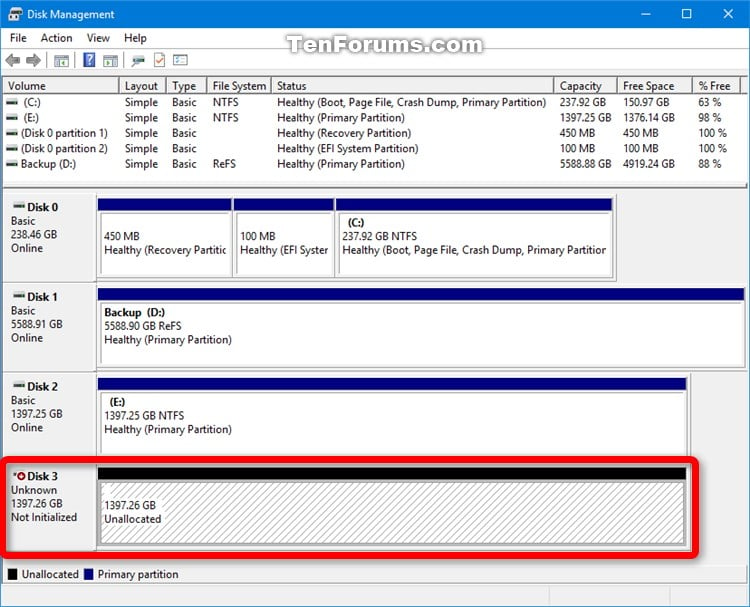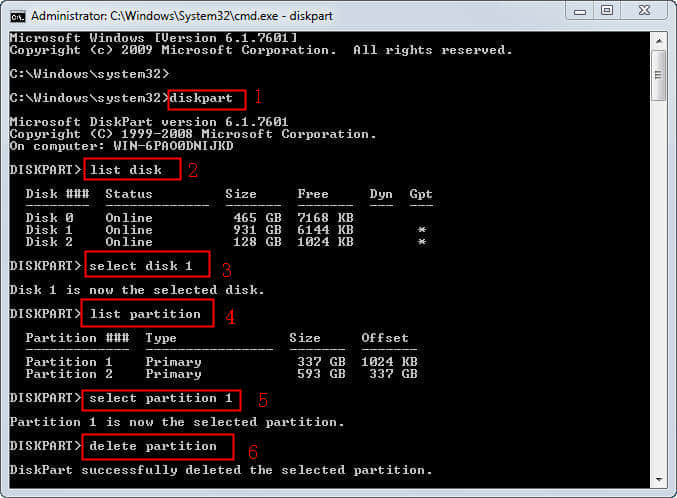
- CLEAN DISK WITH COMMAND PROMPT HOW TO
- CLEAN DISK WITH COMMAND PROMPT INSTALL
- CLEAN DISK WITH COMMAND PROMPT PC
- CLEAN DISK WITH COMMAND PROMPT WINDOWS
Step 3: The last step is to preview the file and finalize which files need to be recovered. The user can also halt the scan if the desired file is already found. Step 2: The tool will then perform a deep scan and result in a list of recoverable files. Open the tool and select the drive from which you want to recover the files.
CLEAN DISK WITH COMMAND PROMPT INSTALL
Step 1: Download and install iMyFone D-Back Hard Drive Recovery Expert. Here are the steps that one can follow to recover the files after disk cleanup using iMyFone D-Back Hard Drive Recovery Expert. It allows the user to preview the data before recovering it. IMyFone D-Back Hard Drive Recovery Expert supports numerous file types and has an excellent success rate of data recovery.

If you accidentally deleted or lost a file in a partition, it can recover easily. iMyFone D-Back Hard Drive Recovery Expert is a data recovery tool that allows the user to recover any type of file in any situation. If you have lost important files or data after disk cleanup and want to recover the files, then it can be done easily. Recover Accidentally Deleted Files after Disk Cleanup Using Advanced Tool
CLEAN DISK WITH COMMAND PROMPT HOW TO
How to Recover Files after Disk CleanupĢ.1. Also, delete the thumbnails of images and recycle bin to clear up some good amount of space on your computer. However, you can delete all the temporary files and browser caches that pile up to a large size.
CLEAN DISK WITH COMMAND PROMPT PC
It has a large file size, and you may think of deleting it but do not, as it will set your PC to a factory reset condition.
CLEAN DISK WITH COMMAND PROMPT WINDOWS
When you are performing a disk cleanup, make sure not to delete Windows ESD Installation Files. Deleting some important files can make your computer stuck on the blue screen. But not all these files can be deleted because they can hurt your computer. The disk cleanup scans your computer and shows you a list of files. It is safe to perform or do a disk cleanup on your computer, but it is not safe to delete everything. People think that it is an ordinary process, but those who have tried it would let you know that it is very powerful and reduces the lagging and crashing of your system. It also includes another process that optimizes the PC if you are running short on storage.ĭisk cleanup is a very effective process that significantly improves the system's performance. There are different types of Disk cleanup, including basic file deletion and automated file deletion. Moreover, sometimes it also deletes system files.

It deletes downloads and all the temporary files that are not needed on the computer. Recover Deleted Data after Disk Cleanup Using Command Promptĭisk cleanup is a complete process that frees up space in the hard drive and improves the performance of the PC. Write-host "Recycle Bin successfully emptied. (New-Object ComponentModel.Win32Exception($res)).Message) $res = ::SHEmptyRecycleBin(::Zero, $null, $dwFlags) Īdd-Type shell32 static extern int SHEmptyRecycleBin(IntPtr hwnd, string pszRootPath, Run it with a /y switch to skip the confirmation.

bat extension and run it to empty your Recycle Bin. I thought, hey, I can do that in PowerShell and wrap it in a batch script hybrid. Having failed in my attempts to RecycleBinObject.InvokeVerb("Empty Recycle &Bin") (which apparently only works in XP or older), I stumbled upon discussions of using a function embedded in shell32.dll called SHEmptyRecycleBin() from a compiled language. I was looking for a script that would empty the Recycle Bin with an API call, rather than crudely deleting all files and folders from the filesystem. I know I'm a little late to the party, but I thought I might contribute my subjectively more graceful solution. Additionally, you will (obviously) have to run the command from an elevated command prompt in order to have sufficient privileges to perform this action. So, to remove the directory, use the rd command ( remove directory) with the /s parameter, which indicates that all of the files and directories within the specified directory should be removed as well: rd /s %systemdrive%\$Recycle.binĭo note that this action will permanently delete all files and folders currently in the Recycle Bin from all user accounts. When this directory is deleted, Windows automatically creates a new directory. The reason that this tactic works is because each drive has a hidden, protected folder with the name $Recycle.bin, which is where the Recycle Bin actually stores the deleted files and folders. Instead, use the %systemdrive% environment variable.) (In most cases, this will be the C: drive, but you shouldn't hardcode that value because it won't always be true. You can effectively "empty" the Recycle Bin from the command line by permanently deleting the Recycle Bin directory on the drive that contains the system files.


 0 kommentar(er)
0 kommentar(er)
